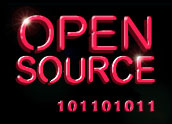
The community around Docker and containers is drawing interest from large enterprise and service provider end users, as well as involvement from dozens of vendors, including those pursuing various container alternatives. 451 Research has published some new research and analysis on this nascent open-source software community in its latest long-format report, “Now Shipping: The Docker and Containers Ecosystem Rapidly Takes Shape.”
The report provides a current and forward-looking view of the community and market around Docker and containers. It is based on research that includes discussions and projects with vendors, investors, and end users, attendance at industry events, and survey results from Voice of the Enterprise (VoTE), a division of 451 Research.
Faster Than Your Average Trend
Among the key findings: The Docker and container trend is moving faster than many previous trends, including PaaS, DevOps, and OpenStack. In those cases, early discussions were mostly among vendors and investors. Questions from enterprise end users tended to come one or two years later.
However, with Docker and containers, queries from end users are coming in right alongside those from vendors and investors, indicating the Docker and container trend is indeed moving at a faster clip.
There was relatively good awareness of Docker and containers in Q1 2015, based on 451’s Voice of the Enterprise cloud computing research, which tapped a network of 12,500 senior IT professionals.
Of the 1,054 senior IT professionals asked how familiar they were with container technologies such as those provided by Docker, more than half (59 percent) said they were not at all familiar, but almost 29 percent reported they were somewhat familiar, and nearly 12 percent said they were extremely familiar with them. For enterprise IT and software that is less than two years old, that was fairly good recognition.
Of the 991 of those senior IT pros who were surveyed about their adoption of container technologies such as Docker, more than half (56 percent) reported they were in the discovery and evaluation phases, more than 10 percent reported running trials and test projects, about 4 percent cited test and development environments, and about 4 percent cited initial implementation of production applications.
Slightly more than 2 percent of respondents said they were using Docker and containers for broad implementation of production applications; nearly 20 percent reported no plans, and 3 percent were unfamiliar with the technologies.
The research also revealed another example of a sort of “Open Source Community 2.0,” in which end users are much more participatory, involved, and influential in project and product road maps.
There is an increasingly prominent role for enterprise end users in open source software, whereby users and customers are now much more active in terms of focus, features, and road map, as conversations with vendors, investors, and customers have indicated. This has been apparent in the OpenStack community, where large telecommunications and media companies are sharing notes on common challenges and best practices.
It’s also showing up with Docker and containers, partly as evidenced by the 451 report’s case studies, which include vendors perfecting the use and management of containers internally and with key end users before sharing these techniques more broadly with customers.
More Players Entering the Field
There is a heavy level of vendor involvement in Docker and containers, covering more than 60 different companies engaged in the development and deployment, management, orchestration, security, and shipping of application containers, based on the report. Many vendors and projects cross over into more than one of these areas, and it’s likely even more players will become involved as the trend continues to grow.
The companies involved with Docker and containers have drawn nearly US$250 million in venture capital funding from several different investors, as the report notes. Docker and containers also have prompted early involvement from large vendors, many of which were not as fast to pivot on previous trends, such as cloud computing or DevOps.
Docker is the de facto standard for application containerization, the report indicates, but there is growing interest in and support for alternatives, particularly open-source community efforts such as Rocket and App Container Spec (appc).
Support recently has materialized for Rocket, appc and CoreOS from some of the same vendors aggressively supporting Docker, including Apcera, Google, Red Hat, and VMware. This adds to the competitive pressure on Docker, but players such as Google and Red Hat are pursuing support of both open-source projects to address customers that may find advantages in one or the other.
Still, these vendors also indicate the ideal path forward is convergence, with Docker and its infrastructure supporting Rocket and appc containers — and Rocket and appc, along with their infrastructures, likewise supporting Docker containers.
Some large vendors are working with Docker as well as their own alternatives, such as Microsoft and VMware. Microsoft partners with Docker, supports Docker containers on Azure, and is even integrating Docker into Windows. However, Microsoft recently announced its own Nano container-purposed OS and Hyper-V containers, which nonetheless are based in part on Docker code.
VMware has taken a similar path, partnering with Docker as well as Google and Pivotal, and enabling the use of containers on VMware infrastructure, including VMware’s vCloud Air hybrid service and Code Stream release automation software. At the same time, VMware recently announced Lightwave, a container identity and access management offering, and Photon, its own container-focused OS based on Linux.
Though these other container efforts certainly represent some degree of competition for Docker, they are significant validations of the customer demand and potential market opportunity around Docker and containers. These Docker alternatives may be attractive to the vendors’ existing customers and heavy users, but their appeal in the larger community of developers and customers may be limited.
There are both drivers and challenges for Docker and containers, the 451 report notes. They bear some similarities to virtual machines, which likely will be affected and disrupted by Docker and containers, but will hold onto a significant and prevalent place in enterprise IT, nevertheless.


















































